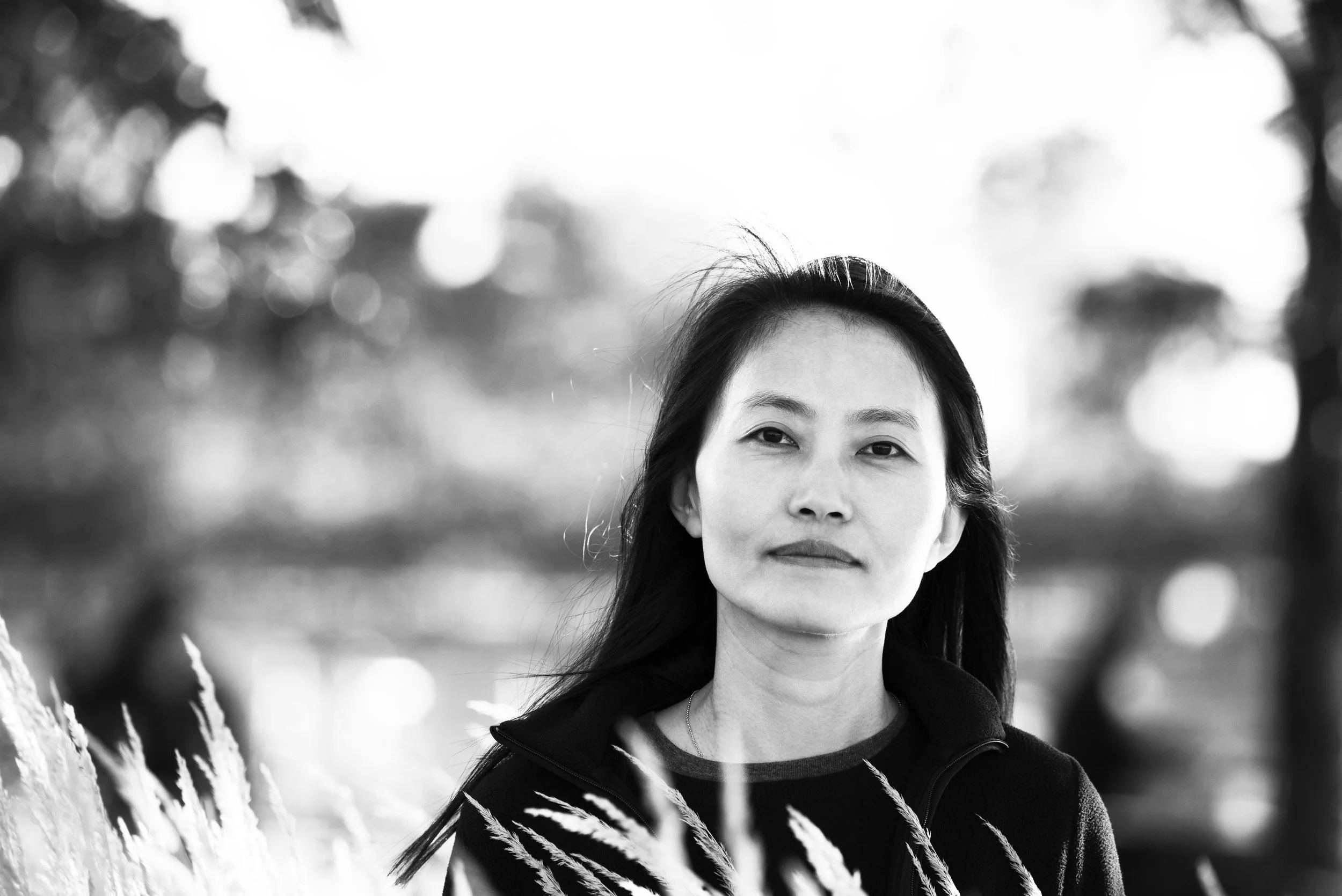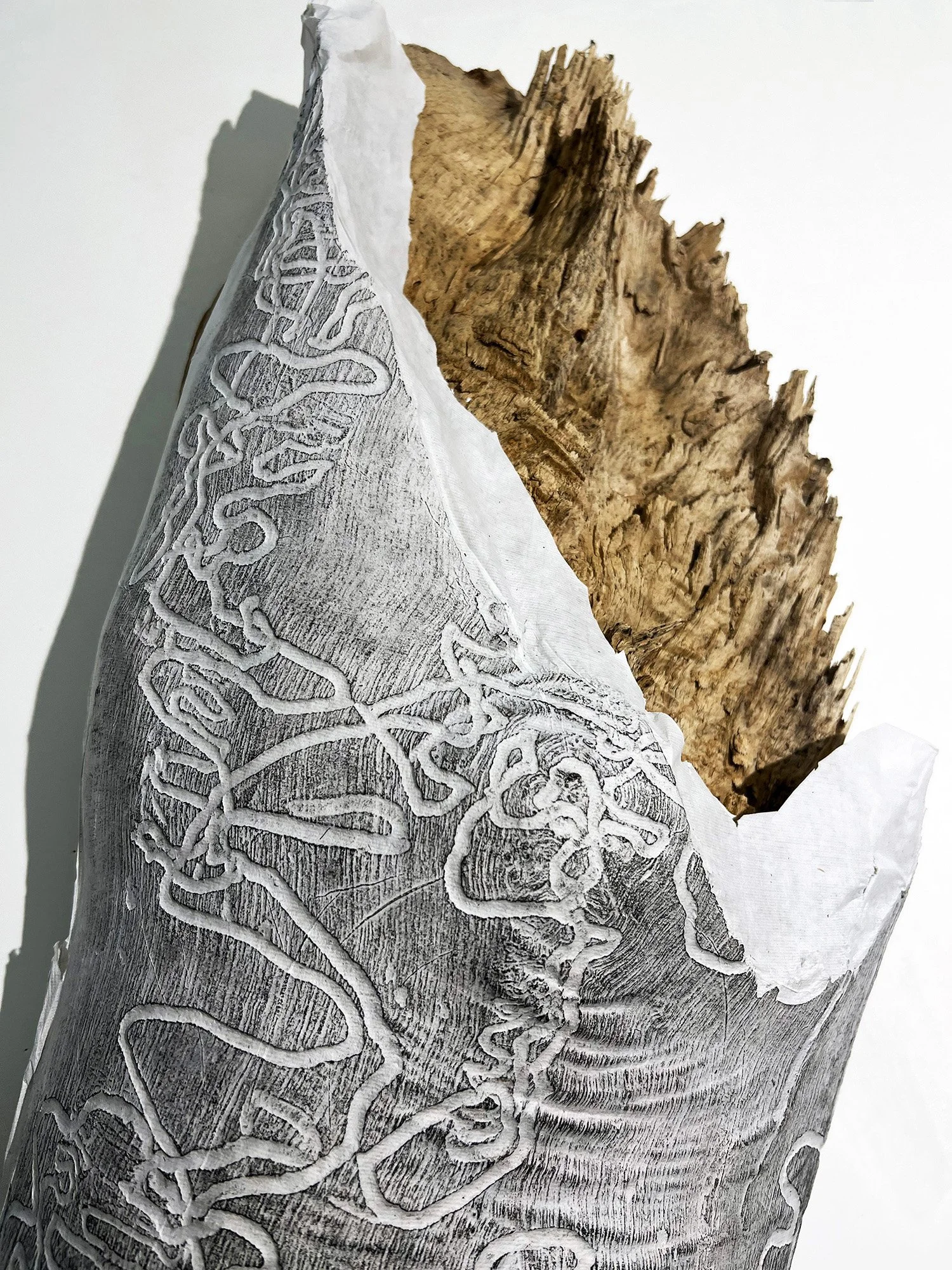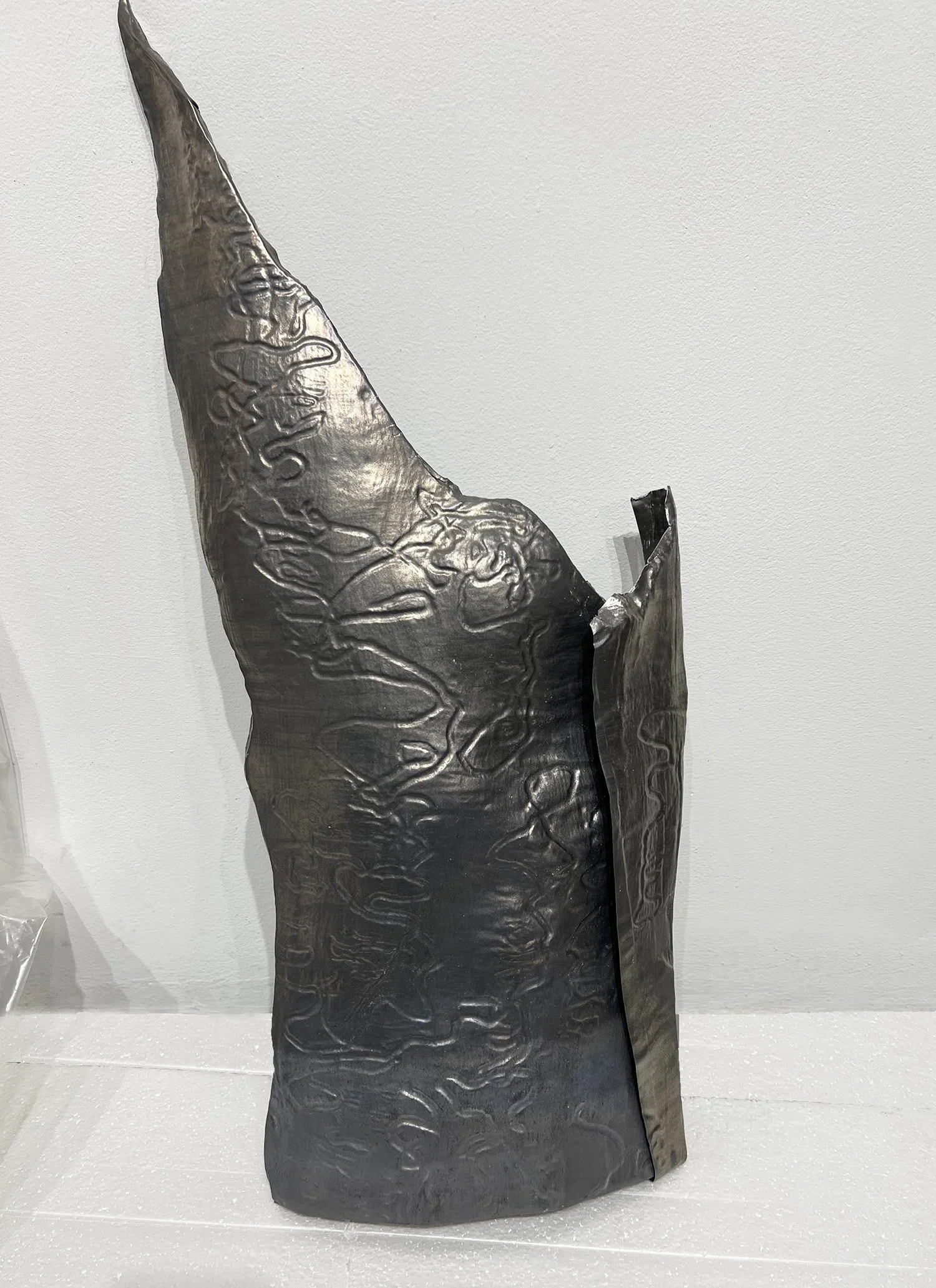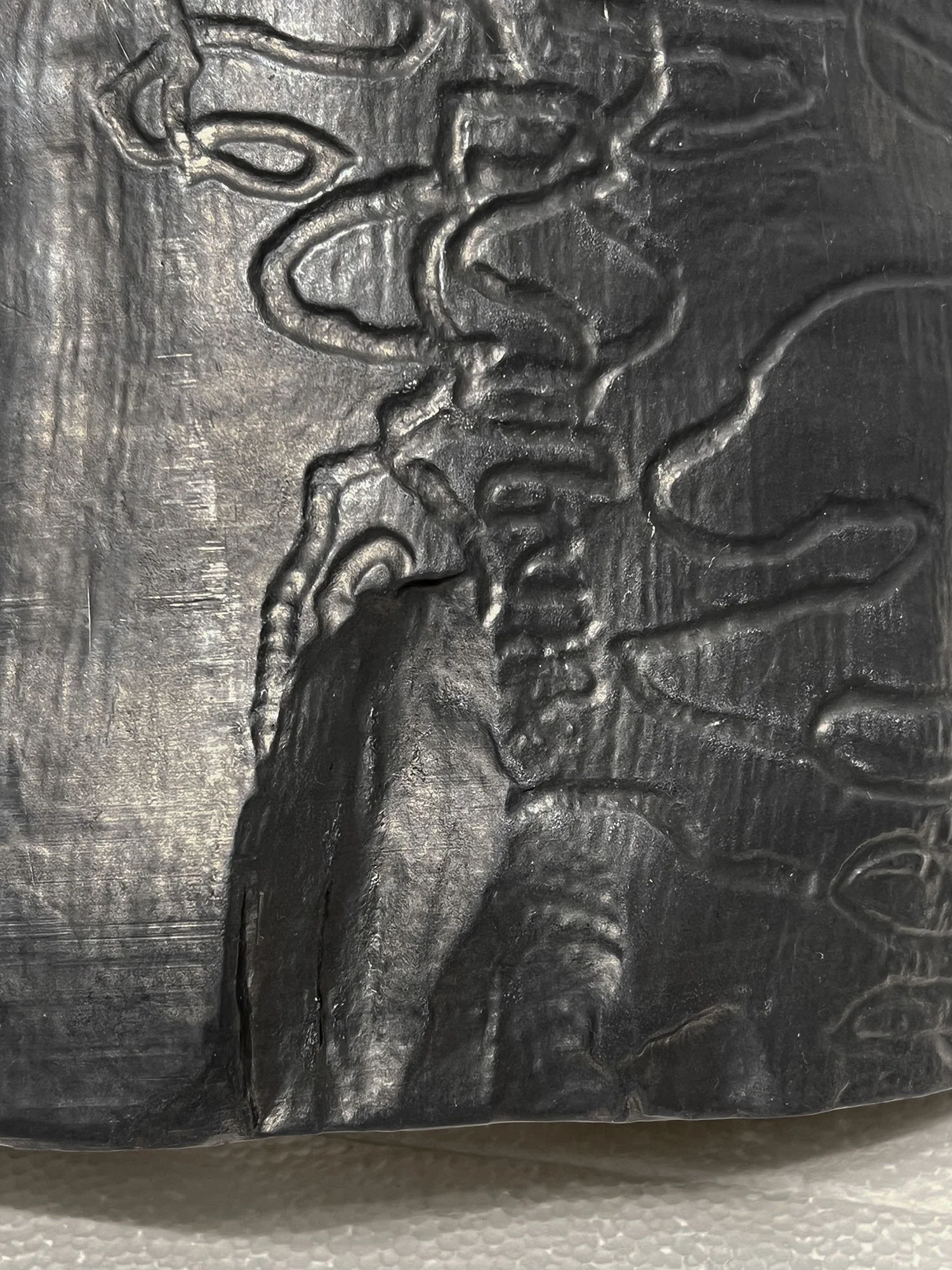Cui Fei: Vermicular Calligraphy
Courtesy of artist
This series is a further exploration of the asemic writing found in nature. While out collecting plant materials, I was intrigued by the markings carved by beetles on tree trunks and how much some of these patterns resemble Chinese calligraphy.
Vermicular Calligraphy Study Ink, rice paper, wood 30" x 15" x 6.5" 2022
Through my research, I discovered that bark beetles have long been part of the ecosystem. They attack weak or sick trees to make room for new growth. Unfortunately, climate change has turned this natural process into a man-made disaster.
Using lead and metalworking techniques, I create "sheaths" of insect-scarred tree trunks. The metal sheet is hammered to reflect the contours and texture of the tree trunks. The patterns, first collected through ink rubbing and then transferred onto the lead, are chased to give more definition to the overall calligraphic design. Historically, lead is viewed as a metal of death and transformation.
Vermicular Calligraphy I Lead, wood 30" x 15" x 6.5" 2022-2023
Through the ink rubbings and the metal sculpture, I trace "writing" back to its origin—nature, emphasizing its importance to our civilization. The lead sheaths of the dead tree trunks represent the devastating loss caused by our overexploitation of nature. These works serve as a metaphor that transformative changes are urgently needed for a sustainable future.
Vermicular Calligraphy I (detail) Lead, wood 30" x 15" x 6.5" 2022-2023



